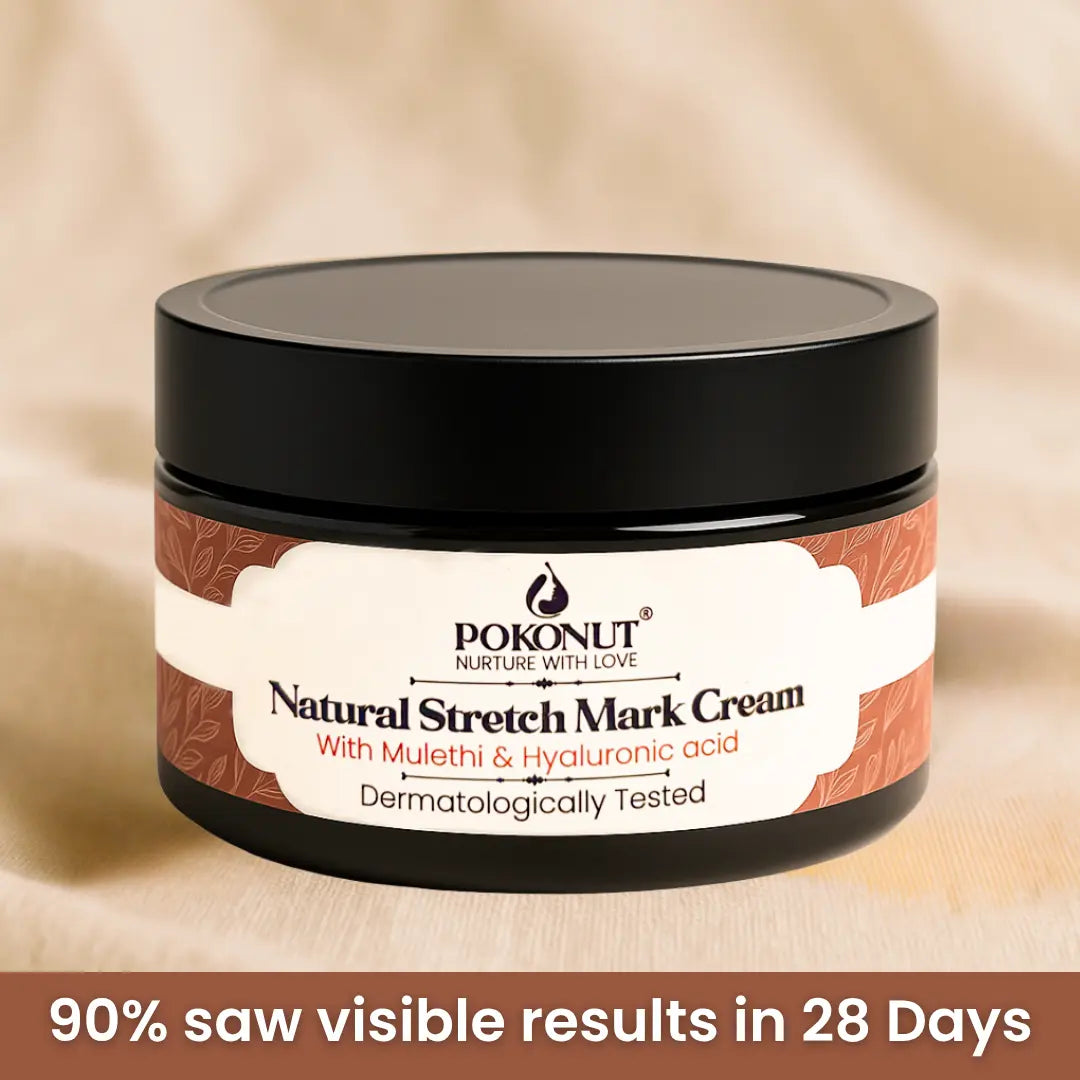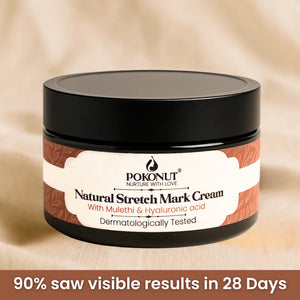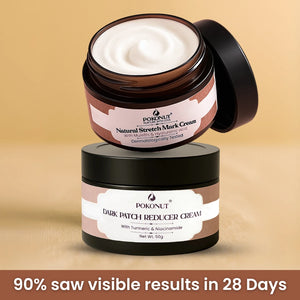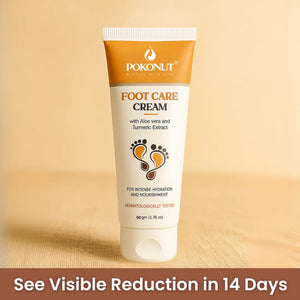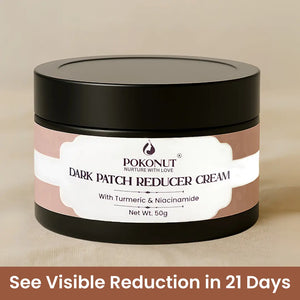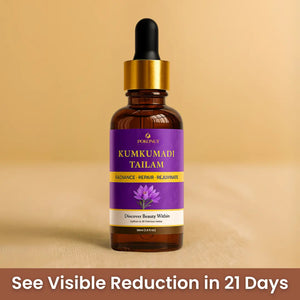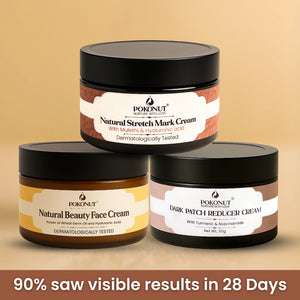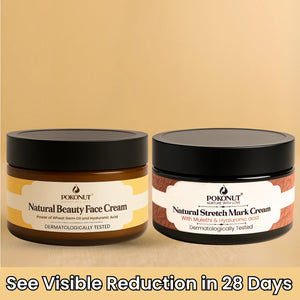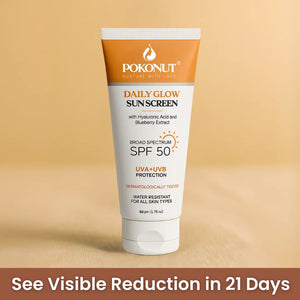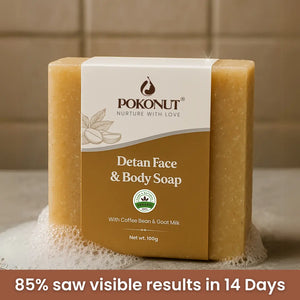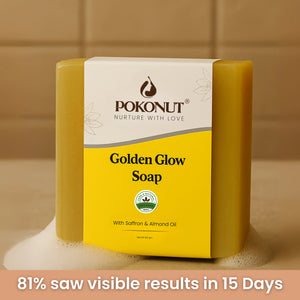Is Kojic Acid Good for Sensitive Skin?

Medically Reviewed By:
Dr. Mousumi Dash, BAMS
Written by Our Editorial Team
Is kojic acid good for sensitive skin? Yes — but only when used in the right concentration and paired with skin-soothing ingredients. Kojic acid can help sensitive skin reduce dark spots, pigmentation, and dullness, but it must be introduced gently and carefully. In this blog, we’ll break down what kojic acid does, why it works, and what people with sensitive skin should look out for.
What Is Kojic Acid?
Kojic acid is a naturally derived skin-brightening ingredient, produced through the fermentation of rice or fungi. It works by blocking tyrosinase, an enzyme responsible for melanin production. That’s why it’s often used in products designed to:
-
Lighten pigmentation
-
Reduce acne marks
-
Fade sun spots and scars
-
Brighten uneven skin tone
Because it doesn’t bleach the skin or cause overnight changes, kojic acid has become a safer and more popular alternative for people looking to lighten marks without harming their skin barrier.
Why Sensitive Skin Needs Extra Care
People with sensitive skin are more prone to:
-
Redness and inflammation
-
Stinging or burning sensations
-
Dry, flaky patches
-
Reactions to strong fragrances or actives
Even ingredients that are generally safe can trigger irritation if they’re too concentrated, poorly formulated, or used without care. That’s why it’s important to evaluate kojic acid from the lens of how it’s delivered, not just the ingredient itself.
Kojic Acid and Sensitive Skin
Sensitive skin can benefit from kojic acid — if the formulation is clean and the usage is controlled.
What the Science Says
Here’s a closer look at key factors:
|
Factor |
Effect on Sensitive Skin |
|
Concentration (1–2%) |
Ideal range; anything above 2% may irritate |
|
Product type |
Soaps or rinse-off formulas are gentler |
|
Pairing ingredients |
Should include moisturisers like coconut oil |
|
Daily use |
Not recommended initially; start with 2–3x/week |
|
pH level |
Low pH products are better tolerated |
If a product ticks the right boxes — like Pokonut’s kojic acid soap — it can offer results without triggering flare-ups.
Signs That Kojic Acid Might Be Too Strong for You
If your skin is extremely reactive or barrier-damaged, kojic acid might still cause mild irritation. Here’s what to watch out for:
-
Redness or burning after washing
-
Excessive dryness or tightness
-
Flaky or peeling skin
-
Breakouts in areas of use
These are often signs that the product is either too strong, being used too often, or not suited to your skin type. Reducing usage frequency or switching to a milder formula can usually help.
How to Use
How to Apply Kojic Acid as a Soap
-
Wet your skin with lukewarm water to open up pores.
-
Rub the kojic acid soap between your hands or apply it directly to the skin, creating a light lather.
-
Apply the lather evenly across the face or body, focusing on pigmented areas.
-
Let it sit for 30–45 seconds (not more than a minute) — this allows the kojic acid to work without irritating sensitive skin.
-
Rinse thoroughly with cool water.
-
Pat dry with a soft towel.
-
Follow up with a moisturiser to lock in hydration.
How to Apply Kojic Acid as a Spot Treatment
-
Cleanse your skin thoroughly and pat it dry.
-
Take a pea-sized amount of the dark spots cream on your fingertip.
-
Apply directly on the dark spots or pigmented area only.
-
Gently massage in circular motion until absorbed.
-
Avoid layering with other active products on the same area.
-
Use the cream once a day at night, unless advised otherwise.
-
Follow up with a gentle moisturiser if needed.
What Makes Kojic Acid Work Safely on Sensitive Skin?
There’s no one-size-fits-all rule, but the right combination of factors can make kojic acid both safe and effective for sensitive skin. Here's what matters most:
1. Formulation Matters
Products that blend kojic acid with calming ingredients like:
-
Coconut oil
-
Aloe vera
-
Olive oil
-
Glycerin
are better suited for sensitive skin. These ingredients help hydrate and buffer the effects of the active acid.
2. Short Contact Time
Soaps and cleansers that wash off after 30–60 seconds are safer than leave-on serums. Short contact limits irritation while still delivering results over time.
3. Ingredient Simplicity
Less is more. Fewer ingredients mean fewer chances of allergic reactions. Avoid formulas that contain alcohol, synthetic fragrances, or parabens, which can stress sensitive skin.
4. SPF Protection
Kojic acid can make your skin more sensitive to sun exposure, so pairing it with a broad-spectrum sunscreen is essential — not optional.
So Is Kojic Acid Really Good for Sensitive Skin?
Yes — kojic acid is good for sensitive skin, but only when used correctly and in the right formulation.
If you have sensitive skin and want to target dullness or pigmentation, kojic acid can offer visible results with minimal irritation. Always start slow, look for skin-friendly ingredients, and avoid harsh add-ons. And above all, listen to your skin.
FAQs
1. How often should I use kojic acid soap if I have sensitive skin?
Start with 2–3 times per week. If your skin handles it well, you can slowly increase frequency.
2. Can kojic acid lighten the skin permanently?
Kojic acid helps fade pigmentation but doesn’t bleach your natural skin tone. It offers a more even complexion, not permanent whitening.
3. What’s the best time to use kojic acid soap?
Evening is ideal. Always follow up with a moisturiser and use SPF the next day.
4. Is kojic acid safe for long-term use?
Yes, especially in rinse-off formulas with low concentrations and natural bases.
5. What should I avoid using with kojic acid if I have sensitive skin?
Avoid mixing it with strong actives like retinol, glycolic acid, or salicylic acid unless advised by a dermatologist.
About Doctor :

